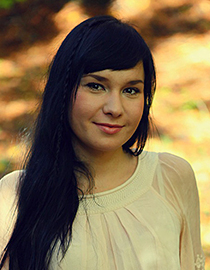Emilia Piasecka

I have graduated from the University of Gdańsk in Poland. My coursework as an oceanography BSc candidate has exposed me to a broad set of topics, ranging from marine physics and chemistry to marine geology and paleoenvironments. The BSc project I conducted involved methane clathrates – their distribution in the World Ocean and their potential of being an alternative non-conventional energy resource, including the aspect of environmental impact.
As a graduate student at the University of Gdańsk I aimed to reconstruct the post-glacial sedimentary processes and environment in Lyngenfjord, North Norway in collaboration with Marek Zajączkowski (Institute of Oceanology, Polish Academy of Sciences) and Matthias Forwick (University of Tromsø). This research, based on lithostratigraphy of sediment cores, multibeam and seismic data, as well as geochemical proxies, resulted in determining the spatial tendencies of sediment distribution and accumulation related to basin geomorphology and dynamics. Furthermore, radiocarbon dating allowed me to evaluate the transition point from the glaciofluvial to open marine environment and consequently – the occurrence and type of submarine landslides. Finally, I also defined main sources of sediment supply basing on chemical composition of the sediment.
My research in the Glanam project aims to reconstruct changes in sub-glacial conditions and ice flow dynamics of the former Barents Sea Ice Sheet through a glacial cycle. The study will be based on an extensive 2D and 3D seismic dataset, high-resolution 3D bathymetry and acoustic / seismic profiles as well as lithostratigraphy of sediment cores. Under the supervision of Karin Andreassen (UiT), Riko Noormets (UNIS) and in collaboration with Chris Stokes (UDUR) and Torbjörn Dahlgren (Statoil ASA), I will characterise the process of formation of mega-scale glacial lineations by the Bjørnøyrenna Paleo-Ice Stream in the south-western Barents Sea area and also seek for the links between glacitectonic deformations and gas / fluid flows.
GLANAM Output
LATEST NEWS
GLANAM NEWSLETTERS
- GLANAM Newsletter 13 – October 2016
- GLANAM Newsletter 12 – August 2016
- GLANAM Newsletter 11 – June 2016
- GLANAM Newsletter 10 – April 2016
- GLANAM Newsletter 9 – February 2016
- GLANAM Newsletter 8 – December 2015
- GLANAM Newsletter 7 – October 2015
- GLANAM Newsletter 6 – August 2015
- GLANAM Newsletter 5 – June 2015
- GLANAM Newsletter 4 – April 2015
- GLANAM Newsletter 3 – February 2015
- GLANAM Newsletter 2 – April 2014
- GLANAM Newsletter 1 – November 2013
